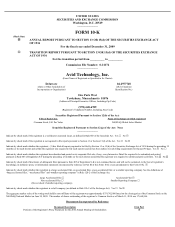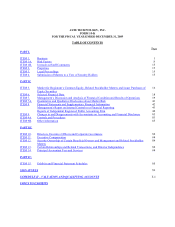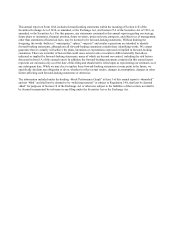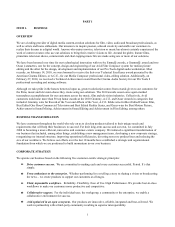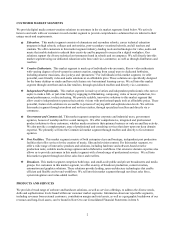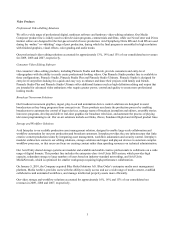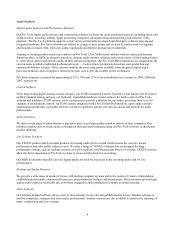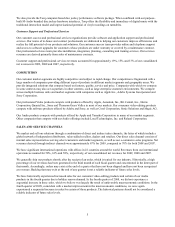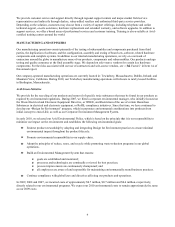Avid 2009 Annual Report Download - page 13
Download and view the complete annual report
Please find page 13 of the 2009 Avid annual report below. You can navigate through the pages in the report by either clicking on the pages listed below, or by using the keyword search tool below to find specific information within the annual report.
8
ITEM 1A. RISK FACTORS
Investing in our common stock involves a high degree of risk. You should carefully consider the risks and uncertainties
described below in addition to the other information included or incorporated by reference in this annual report before
making an investment decision regarding our common stock. If any of the following risks were to actually occur, our
business, financial condition or operating results would likely suffer, possibly materially, the trading price of our common
stock could decline, and you could lose part or all of your investment.
Our success depends in significant part on our ability to provide innovative solutions in response to dynamic and
rapidly evolving market demand.
To succeed in our market, we must deliver innovation. Innovation requires both that we accurately predict future market
trends and customer expectations and that we possess the flexibility and nimbleness to quickly adapt our product roadmap
and development efforts in response. Predicting market trends is difficult, as our market is dynamic and rapidly evolving.
Additionally, given the complex, sophisticated nature of our solutions and our typically lengthy product development
cycles, we may not be able to rapidly change our product direction or strategic course. If we are unable to accurately predict
market trends or adapt to evolving market conditions, our ability to innovate and capture customer demand will suffer and
our financial performance and market reputation will be negatively affected. Even to the extent we make accurate
predictions and possess the requisite flexibility to adapt, we may be able to pursue only a handful of possible innovations as
a result of limited resources. Our success, therefore, further depends on our ability to identify and focus on the most
promising innovations. We additionally have the challenge of protecting our product roadmap and new product initiatives
from leaks to competitors that might reduce or eliminate any innovative edge that we seek to gain.
Our revenues and operating results depend on several variables and may fluctuate from period to period.
Our revenues and operating results depend on several variables, which include, but are not limited to:
timing and market acceptance of new product introductions by us and our competitors;
competitive pressure on product pricing;
mix of products and services sold;
our ability to recognize revenues from large or enterprise-wide sales;
length of sales cycles and associated costs;
global macroeconomic conditions;
changes in operating expenses;
changes in foreign currency exchange rates;
reliance on third-party reseller and distribution channels;
remedial costs and reputational harm associated with product defects or errors;
cost of third-party technology or components incorporated into or bundled with products sold;
seasonal factors, such as higher consumer demand at year-end; and
price protections and provisions for inventory obsolescence extended to resellers and distributors.
The occurrence and interaction of these variables may cause our revenues and operating results to fluctuate from period to
period. As a result, period-to-period comparisons of our revenues and operating results may not provide a good indication
of our future performance.


